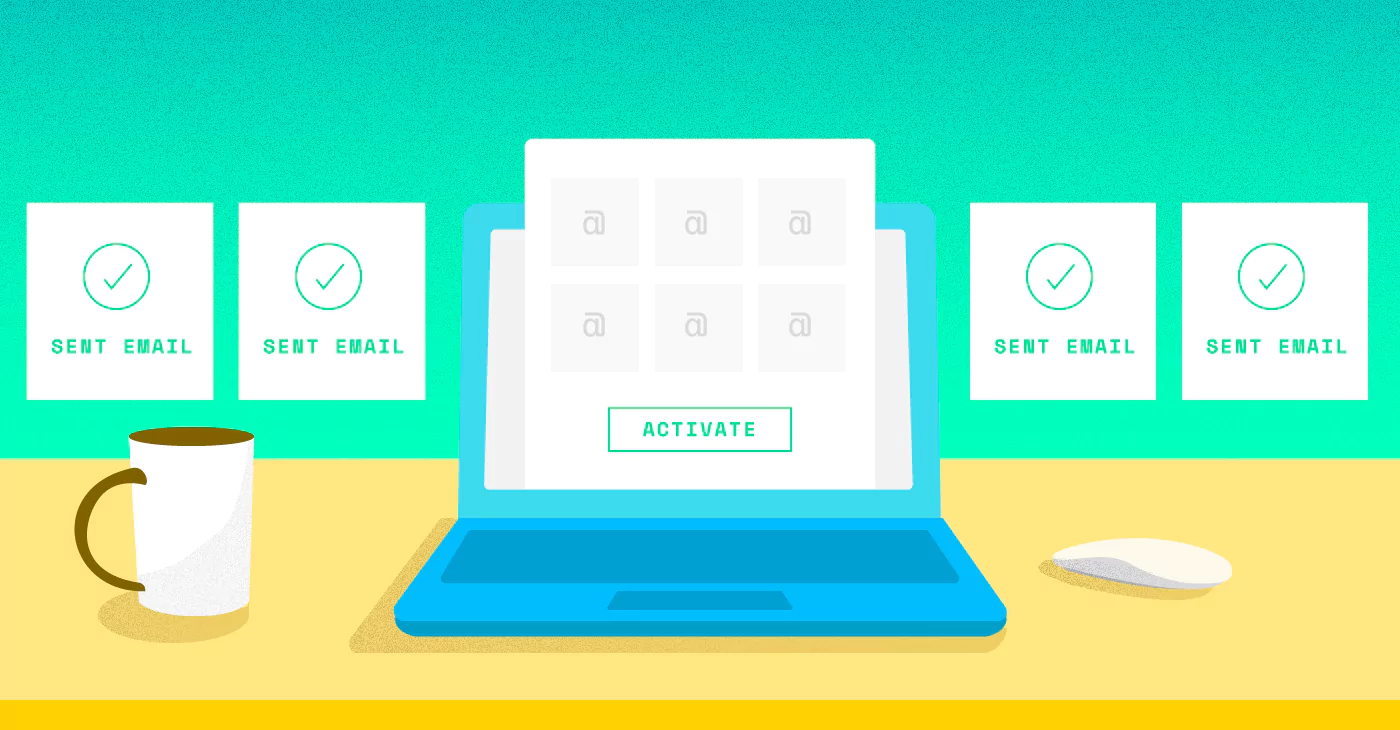Fear of Marketing Automation (#FOMA): Lack of Human Resources
January 9, 2018 7 min read

Marketing automation has become a bit of a buzzword, and I’m guessing you have heard it thrown around quite a bit.
It’s okay if you still don’t fully understand what is involved in marketing automation.
To explain it in layman’s terms, once your company reaches a certain point, it’s impossible to have one-on-one contact with everyone. Therefore, marketing automation involves using software to automate certain marketing tactics and workflows. That way you continue to nurture relationships with your customers while still bringing in new business. In other words, marketing automation can give one person the power of ten (or more!) and erase any fear of a lack of resources.
You can do all this without having to spend your time emailing customers or scheduling social media posts. Therefore, it can save you tons of time down the road and free you up to do the most important things in your business.
The Biggest Myths About Marketing Automation

The popularity of marketing automation has grown tremendously over the years with roughly 59 percent of B2B companies implementing some form of it. And for good reason — marketing automation increases sales productivity by 14.5 percent while reducing overhead by 12.2 percent.
So if that’s true, then why aren’t more companies adopting marketing automation? Obviously, there are still a few holdouts left. What’s the deal?
Well, the reason really boils down to one word: fear. Many people don’t really understand marketing automation so certain fears and myths still persist around the topic. Let’s look at a few of them, shall we?
Marketing Automation is Impersonal
This is probably the biggest fear most people need to overcome.
So let’s clear up one thing right from the start — marketing automation does not mean that you are delivering cold, impersonal content to your customers. It’s actually the exact opposite.
Because it gives you the bandwidth to reach more people in a more strategic way, you can take the time to create exceptional content that will deliver more value to your customers.
So rather than automation being synonymous with spam, it actually allows you to communicate in a more meaningful way. And the research backs this up — out of all the companies using marketing automation, 80 percent saw an increase in leads and 77 percent reported an increase in their conversion rates.
It’s Only Useful for the Marketing Department
This myth is understandable given the name but the truth is, marketing automation extends beyond your marketing team. It can help anyone who is interested in taking more redundant tasks off their plate. It gives you more time to focus on strategic, big picture thinking like how to continue to nurture leads or coming up with new campaign ideas.
It can also be hugely beneficial to your sales team because it makes it easier for them to qualify leads. You probably already know that not all leads are created equal. After all, what is the point of lead generation if it only seems to attract people who have no interest in buying your product or service?
That’s why a huge benefit of marketing automation is that it ensures not just that your company brings in new leads but that it brings in quality leads. It does this by providing important customer data like job position and industry.
It also reveals digital data about how your leads behave online. All of this information can be used to help your company sort and quality those leads, which we will get to shortly.
Marketing Automation is Too Expensive for Small Businesses
This is another persistent myth and if it were 2011, it may even be true. But now that are tons of marketing automation tools available and many of the most basic plans are completely free. And don’t write off the more affordable plans — the majority are intuitive, simple to use, and have many of the same capabilities as more expensive plans.
Tips for Implementing Marketing Automation

So now that we have cleared up some of the biggest myths and fears about marketing automation, how do you actually get started?
This is a good question because truth be told, it is only as useful as its implementation. Going forward, it’s important to find the right mix of strategies and tactics so that your company can find the biggest return on investment. Let’s look at a few tips on how you can move forward.
Start With a Plan
It’s important to understand that the beginning period will be the most difficult, time-consuming part of the process. However, marketing automation will save you time down the road.
Before you choose your marketing automation software, make sure you have a plan in place. What objectives and goals is your company looking to achieve?
Once you have identified this you can put a plan in place. I would recommend starting small and then build out your plan from there. Begin deploying what you are already doing first and then you can always add on as you continue to gain confidence.
Once you have a plan in place and everything seems to be smooth sailing, it’s important that you continue to evaluate what’s working and what isn’t. Continue to monitor your data and test out new ideas. You’re never going to be done learning and it will always be a work in progress.
Sort and Qualify Your Leads
Do you understand how your customers are interacting with your website? Are you familiar with their browsing habits? And most important, do you know how to use that information to develop future marketing strategies? Your marketing automation software can help you do just that.
You can use it to gauge customer interest based on opens and clicks through rates. And the data you receive makes it easier to segment both leads and customers based on their behavior. That way you can create messaging that is specific to each type of lead or customer.
The term “segmentation” makes a lot of people nervous but it’s actually pretty simple. It’s simply a strategy for dividing customers and leads into different groups based on similar traits or online habits.
To get started, you first need to make sure your data is accurate and reliable. Many businesses have databases that contain tons of outdated and redundant information. In fact, according to this study, 60 percent of companies have data that is unreliable.
Once you have cleaned up your data, you can focus on segmentation knowing that your efforts will produce the best results possible. However, this is also a process that will never be finished. Your motto should always be to test…and then test some more.
Outsource What You Can
So what if you don’t have a big marketing department to handle all of this for you? Does this mean marketing automation isn’t for you? Absolutely not. Thanks to the rise of the freelance economy, it has become easier than ever to outsource some of your work to other people at an affordable price point.
For instance, freelance platforms like Upwork allows you to connect with over nine million freelancers in 180 different countries. With over 1.5 million freelancers, Guru is another great alternative for outsourcing work.
This not only puts a wide pool of qualified candidates at your fingertips but it allows you to build long-term relationships with the freelancers you hire. And scaling your business will be easier when you already have a remote team put in place.
Many people get nervous when they think about outsourcing important business tasks to freelancers. We’ve probably all heard stories of associates who were taken advantage of. And hiring the wrong person can definitely hurt you more than it can help.
A good plan is to ask for recommendations from colleagues for freelancers they used and were happy with. And again, I would recommend you start small in this area. Start out with some basic tasks and then build from there as you gain a level of trust with that person.
Conclusion
Once your email list gets beyond a certain level, it’s impossible for you to personally interact with everyone. Thankfully, marketing automation allows you to continue to build relationships with your customers and leads while still maintaining a shred of sanity.
Hopefully, now you understand not only how powerful marketing automation is but also how feasible it is for you to implement in your own business. It’s a great way to automate the things you just don’t have time for so you can continue to bring value to your customers.
What are some of the marketing tasks you plan to automate first? Let me know in the comments!



